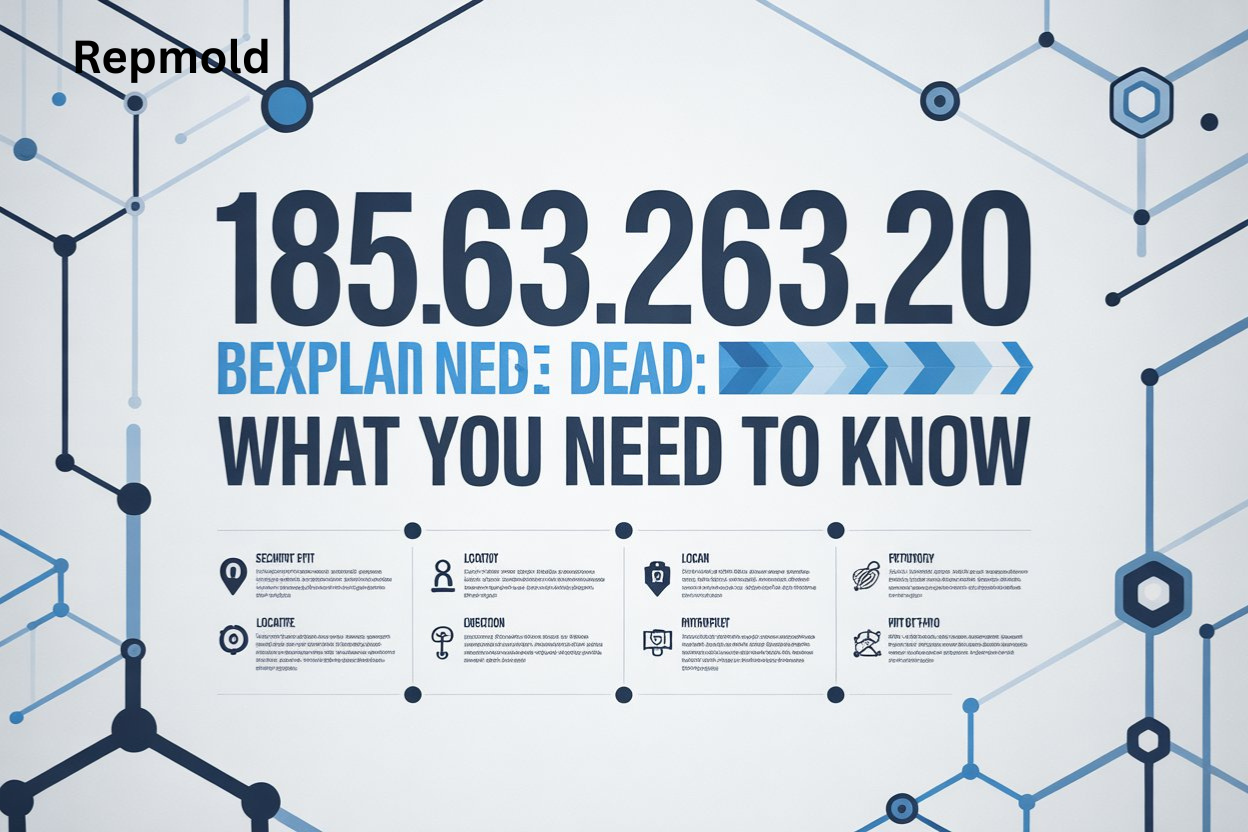Introduction
In the vast digital world, certain IP addresses capture attention online. One such address is 185.63.263.20. People often notice it in server logs, analytics, or network reports. Curiosity grows when it appears repeatedly. Is it dangerous? Or is it harmless?
In this article, we will explore what 185.63.263.20 really means, its role in online networks, and potential concerns. You will also learn why it shows up in your logs, how to interpret it correctly, and steps to stay secure. By the end, you’ll understand its significance clearly.
Understanding IP addresses is essential for everyone today. They act as unique digital labels, helping devices communicate over the internet. Without IPs, websites, emails, and apps wouldn’t work properly. By learning the basics, you can better navigate the digital world, identify unusual activities, and protect your data.
Moreover, understanding IP addresses improves network management and cybersecurity awareness. It helps website owners, IT teams, and everyday users alike. Even seemingly strange IPs, like 185.63.263.20, become easier to interpret when you know how IPs function.
In short, this introduction sets the stage to demystify 185.63.263.20, explain its importance, and guide readers toward safe, informed online behavior.
What is 185.63.263.20?
An IP address is a unique digital label assigned to every internet-connected device. The format most commonly used is called IPv4, which consists of four numbers separated by dots. These numbers are called octets, and each octet ranges from 0 to 255. For example, a valid IPv4 address can be 192.168.1.1.
The address 185.63.263.20 follows this familiar pattern, so it looks like a normal IPv4 address. That’s why it often appears in server logs, analytics reports, and online discussions. Many users notice it because it seems real and repeatedly shows up in tracking tools.
However, this IP can sometimes be invalid or misinterpreted. In IPv4, no octet can exceed 255, and here, the third segment “263” is above the limit. Despite this, it still appears in some logs due to typos, bots, or misconfigured crawlers.
In addition, people often search for this IP online, curious whether it poses a threat. Because it looks like a valid address, it can create confusion among beginners. Still, most appearances of 185.63.263.20 are harmless.
Overall, 185.63.263.20 is a digital label that draws attention because it looks legitimate, even though it may be invalid. Understanding its structure helps you interpret network logs accurately and avoid unnecessary panic.
How IP Addresses Work
IP addresses act as digital identifiers for every device connected to the internet. They ensure that data reaches the correct destination. Without IPs, devices would not know how to communicate with each other.
These addresses play a crucial role in routing data. When you visit a website, your request travels through multiple servers. IP addresses guide this request, ensuring it reaches the intended server quickly and accurately. Similarly, responses from servers use your IP to return data correctly.
IP addresses also connect devices across networks, supporting online communication for websites, apps, and emails. They are essential for smooth internet functioning and reliable digital interactions.
The address 185.63.263.20 fits into this system as an IPv4 example. Although it may be invalid, it demonstrates how devices are tracked and connected using numerical labels. Observing such IPs helps users understand network activity clearly.
Why 185.63.263.20 Appears in Your Logs
The IP address 185.63.263.20 often shows up unexpectedly in server logs or analytics. Several common causes explain its appearance. First, typos or human errors during configuration can create malformed entries. Second, bots or automated scripts may generate random IPs while scanning websites. Third, analytics glitches in reporting tools sometimes record invalid addresses incorrectly.
Additionally, this IP can appear in web hosting reports or network monitoring tools. Hosting servers often log all connection attempts, including unusual or invalid addresses. Similarly, firewalls and security systems may record it while tracking activity across networks.
It is important to note that its presence does not always indicate a threat. Most appearances are harmless glitches or artifacts. By understanding why it shows up, users can focus on real issues rather than unnecessary concerns.
Security Considerations
Although 185.63.263.20 is often harmless, some patterns require caution. Repeated or unusual appearances in logs may indicate bot activity. Sudden spikes in connections from this IP can also signal automated scanning attempts.
To stay safe, you can check an IP’s reputation using online tools. Websites like VirusTotal, AbuseIPDB, or IPVoid provide information on whether an address has been reported for malicious activity. These checks help you identify potential threats quickly.
Additionally, it is important to filter and monitor network activity regularly. You can block suspicious IPs, add rules to analytics tools, and review firewall logs often. Maintaining clean and organized logs ensures accurate monitoring and reduces false alerts.
By following these steps, you can balance caution with practicality, focusing on real threats while ignoring harmless anomalies like 185.63.263.20.
Tracing and Validating 185.63.263.20
Tracing IP addresses helps determine their origin and purpose. Tools like WHOIS provide details about the ISP and registration. Similarly, reverse DNS lookups show associated domain names. Network commands such as ping, traceroute, or nslookup reveal connectivity paths and server locations.
To check if 185.63.263.20 is real or invalid, start by comparing it with IPv4 standards. Remember, each octet must be between 0 and 255. If any segment exceeds this range, the IP is invalid. Repeated appearances may indicate bot-generated traffic rather than a legitimate device.
Maintaining clean analytics and accurate reporting is crucial. Filtering invalid IPs prevents skewed data in reports. Accurate logs help IT teams focus on real threats and improve overall network security.
By tracing and validating IPs properly, you can separate harmless glitches from potential issues effectively.
Common Misconceptions
Many people assume 185.63.263.20 is malicious or suspicious. However, this is not always true. Often, it appears due to typos, bots, or analytics glitches. Such occurrences are harmless and do not indicate a security breach.
It is important to differentiate between invalid IPs and real threats. An invalid IP, like this one, cannot connect to your network. Real threats come from verified addresses that attempt unauthorized access. Meanwhile, harmless glitches are simply errors in logs or automated scripts generating unusual entries.
By understanding these differences, users can avoid unnecessary panic. IT teams can focus on actual security risks while ignoring benign anomalies. Moreover, recognizing harmless glitches improves log accuracy and overall network monitoring.
In short, not every unusual IP is dangerous. Knowledge and proper analysis are key to making correct judgment
Why Understanding IPs Matters
Understanding IP addresses benefits website owners, network administrators, and everyday users. It helps identify unusual activity quickly. Moreover, it ensures smoother management of networks and servers.
For website owners, knowing IPs improves server performance and troubleshooting efficiency. Network admins gain better visibility into traffic patterns, helping prevent unauthorized access. Regular users can recognize suspicious activity, enhancing online safety and confidence.
Additionally, knowledge of IP addresses strengthens cybersecurity and digital literacy. It allows users to interpret logs accurately and make informed decisions. Proper IP understanding reduces false alarms while focusing on real threats.
Looking ahead, IP knowledge connects to broader topics like IPv6, IoT, and future infrastructure. As devices multiply, unique identifiers become crucial. Awareness today ensures preparedness for tomorrow’s digital ecosystem.
In summary, understanding IPs is essential for security, efficiency, and future-proof digital awareness.
Conclusion
In summary, 185.63.263.20 is an IP address that often appears in logs. It can be real, invalid, or bot-generated, depending on context.
The key takeaway is to monitor unusual patterns, validate IP addresses, and maintain clean network logs. These practices help separate harmless glitches from real security threats. Regular checks improve network safety and reporting accuracy.
Additionally, staying aware of IP addresses strengthens overall digital literacy and cybersecurity. Understanding how IPs function helps website owners, IT teams, and everyday users navigate the online world confidently.
Finally, remember that not all unusual IPs are dangerous. With knowledge, proper monitoring, and awareness, you can ensure safer and more informed online experiences for yourself and your organization.

